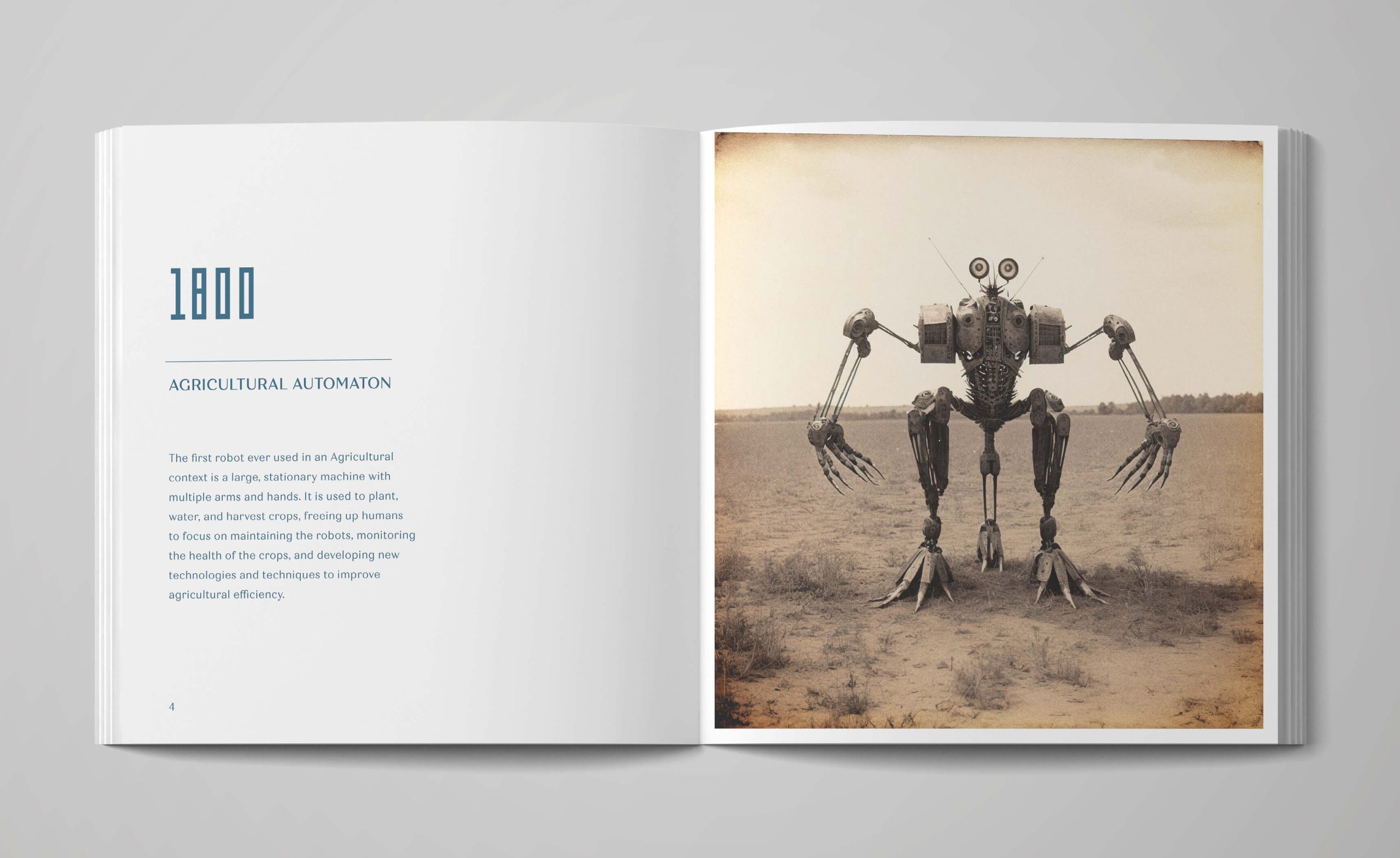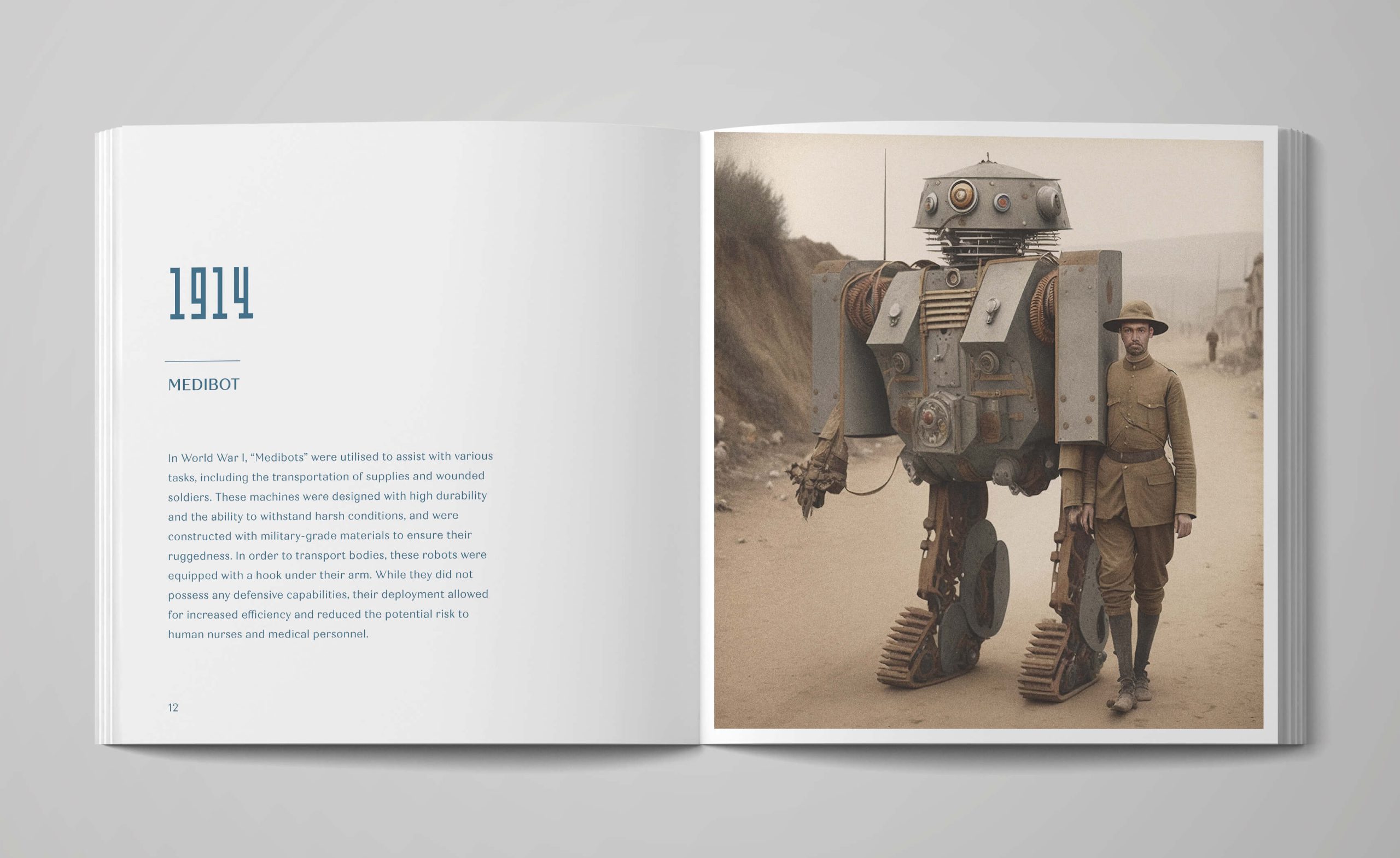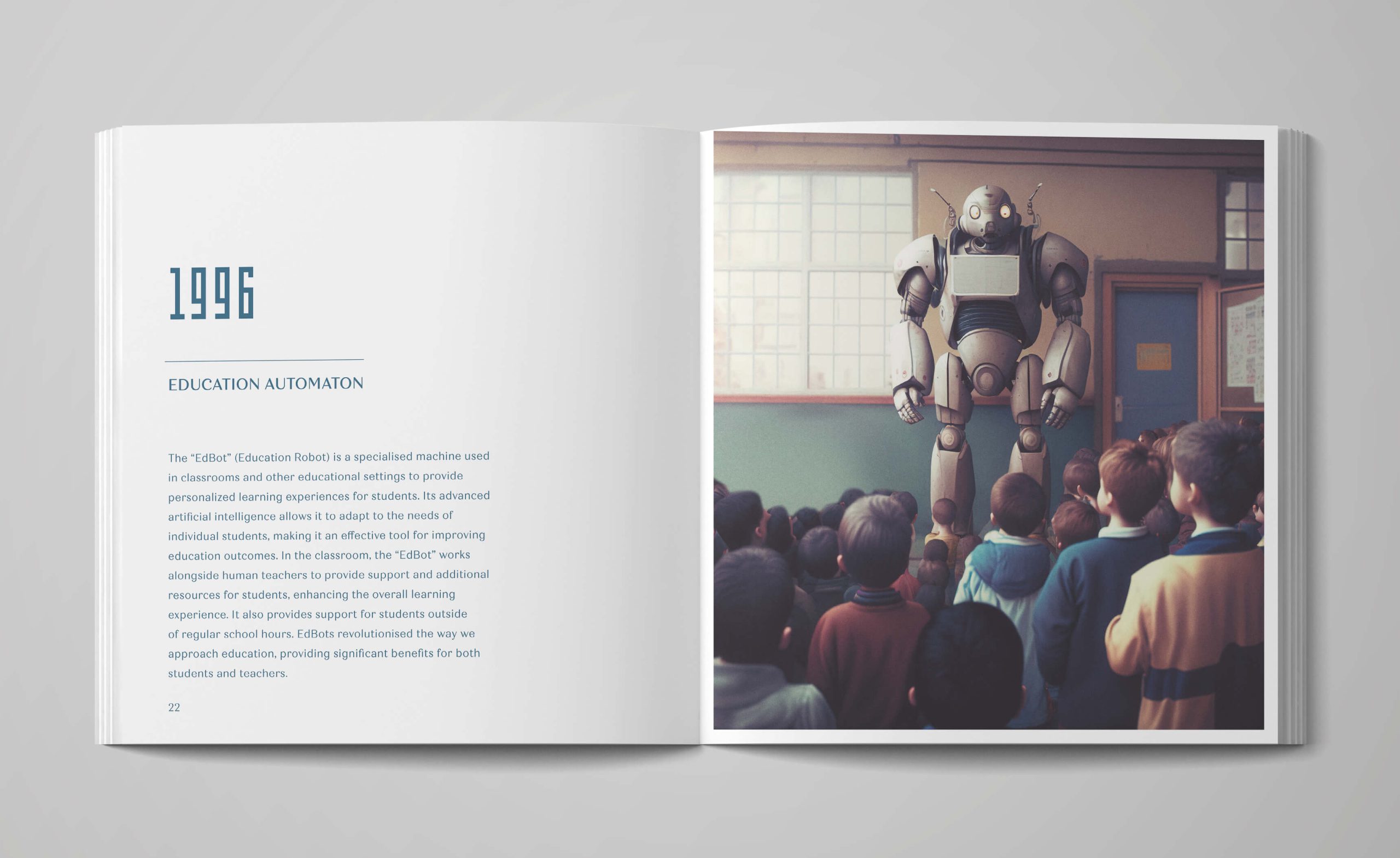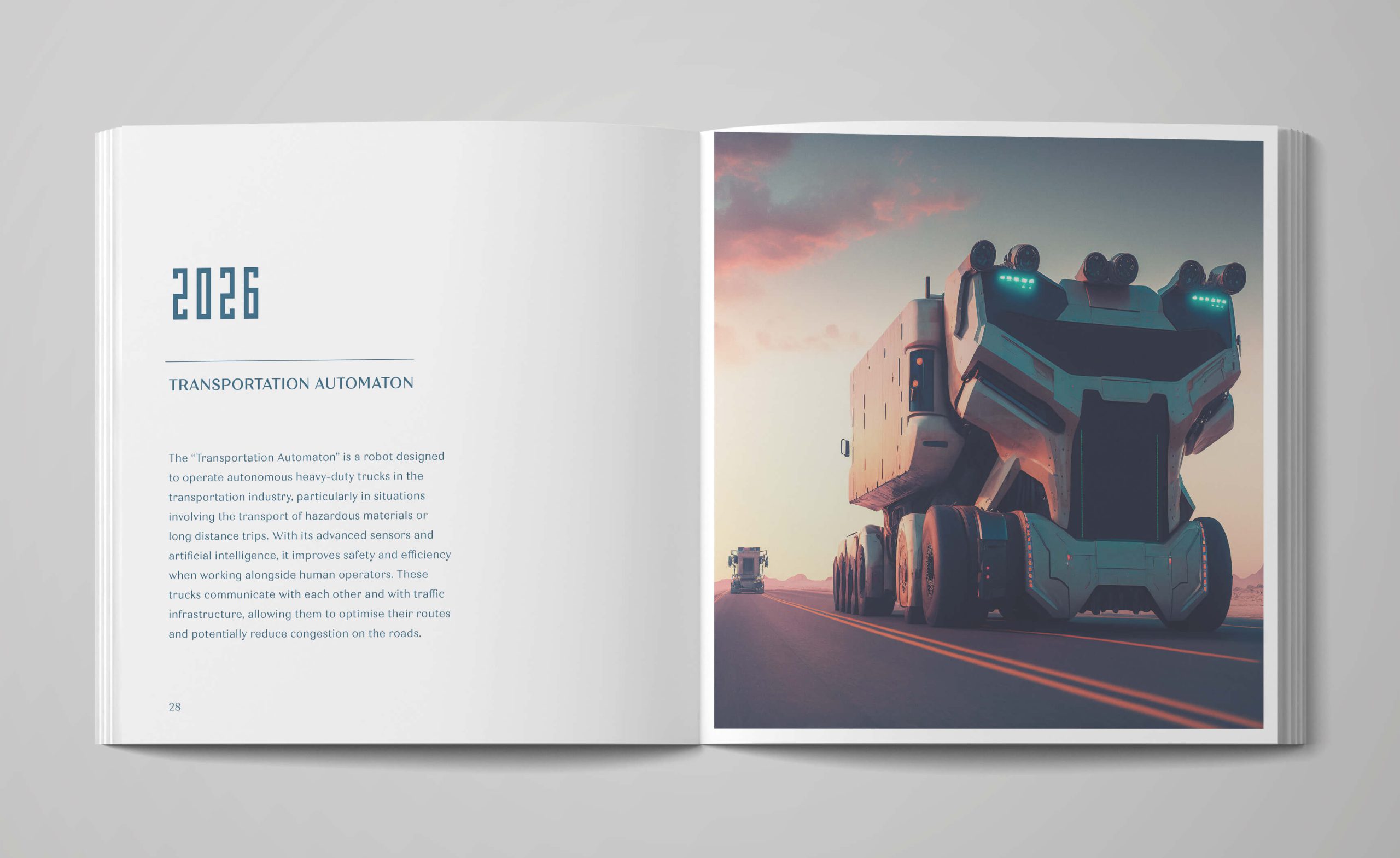PROJECT
ROBOT REVOLUTION
ROLE
Graphic Designer & Storyteller
OBJECTIVES
- Craft an engaging e-book that reimagines history with robots and AI from the 1800s.
- Utilise AI technology for image generation while ensuring historical accuracy in aesthetics.
- Address challenges of image resolution and achieve cohesive design throughout.
- Deliver a narrative experience that complements the visuals, adding depth to this unique history.
SOFTWARE & TECHNOLOGIES
- ChatGPT (for narrative crafting)
- Dall-E and Midjourney (for AI-assisted imagery)
- Topaz Gigapixel (for image enhancement)
- Adobe Photoshop (for image editing and historical accuracy)
- Adobe InDesign (for layout and design)

Growing up, I had a strong fascination with robots and a love for science fiction shows. These early interests led me to a unique question: What if robots and AI had been part of our history since the 1800s? This idea became the foundation for “Robot Revolution,” a collection of 13 imaginative tales, crafted with advanced technology and my personal design touch.
How It Was Made:
The Big Idea: A world where robots and AI have always been present provides a rich tapestry to weave stories around. This alternate history intrigued me enough to explore iconic events and everyday happenings.
Harnessing AI for Imagery: Both Dall-E and Midjourney were indispensable in this creative journey. However, it wasn’t just about feeding prompts but mastering the intricacies of each word to yield the right imagery.
Image Enhancement: While the AI tools provided the initial images, they often came at a lower resolution. Here, Topaz Gigapixel played a crucial role, letting me upscale and retain the clarity of each visual.
Historical Accuracy in Imagery: Every era has its unique photographic characteristics. Images from the early 1800s required significant adjustments to mirror the grainy quality of early photographs. In contrast, visuals representing the 60s were treated to reflect the distinct look and feel of photography from that era. For these, Photoshop was my trusty companion, aiding in colour correction, applying grain, and making other nuanced manipulations.
Laying It All Out: With the stories and images in hand, Adobe InDesign was the tool of choice for layout and design. It ensured each page flowed seamlessly and the book resonated as a cohesive whole.
Narrative Crafting with ChatGPT 3 (not 3.5 or 4): The stories were not an afterthought. ChatGPT helped in creating tales that complemented the painstakingly crafted visuals, adding depth to this unique history.
Bringing It All Together: Two days of intense focus and iterations, making sure that fantasy, art, and history intermingled perfectly.
Are the stories a touch whimsical? Definitely! But they tease out the fascinating ‘what if’ scenarios. For government officials and anyone else peering into this book, it offers more than a chuckle. It’s a showcase of the potential of technology, creativity, and a glimpse into the limitless horizons of design.













